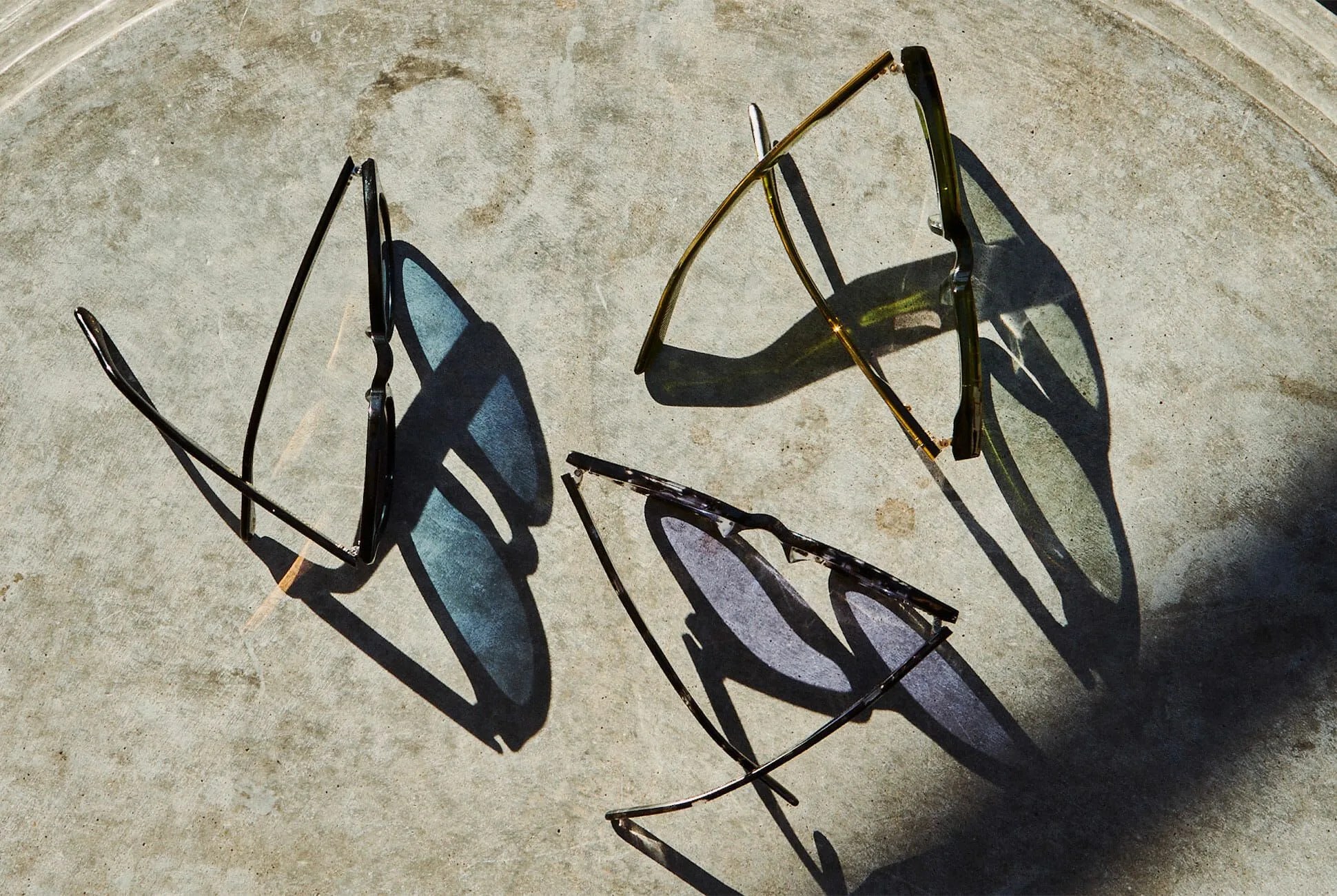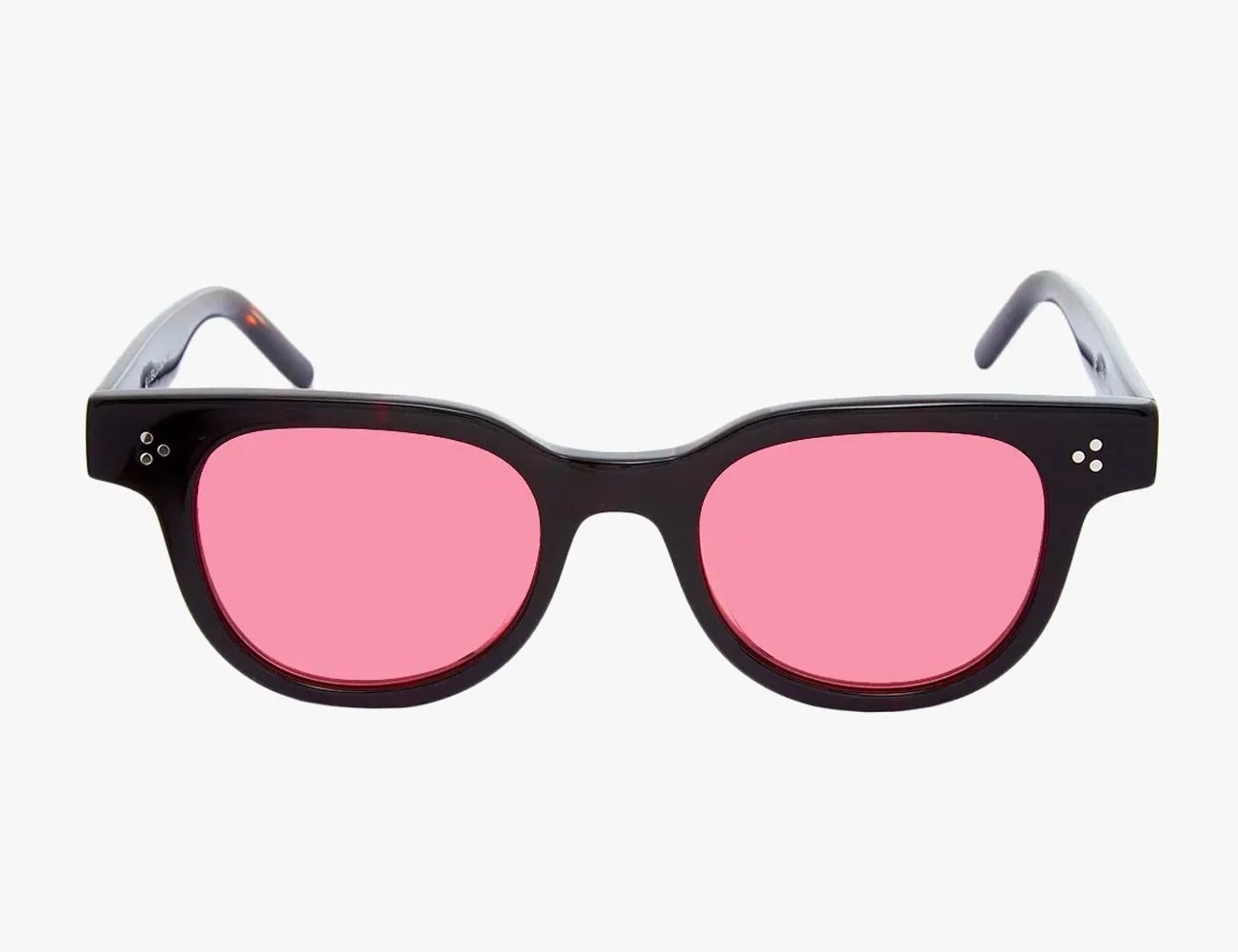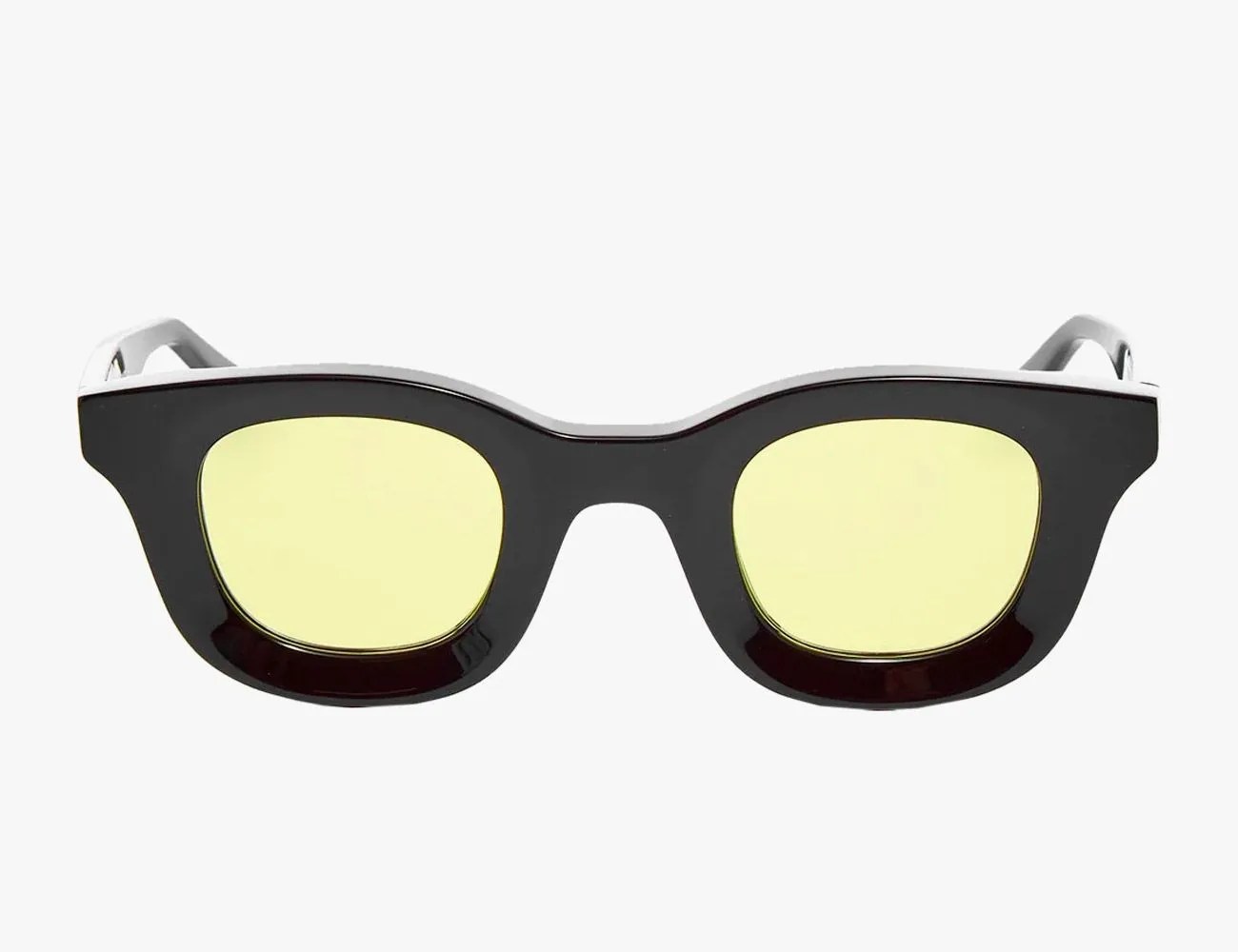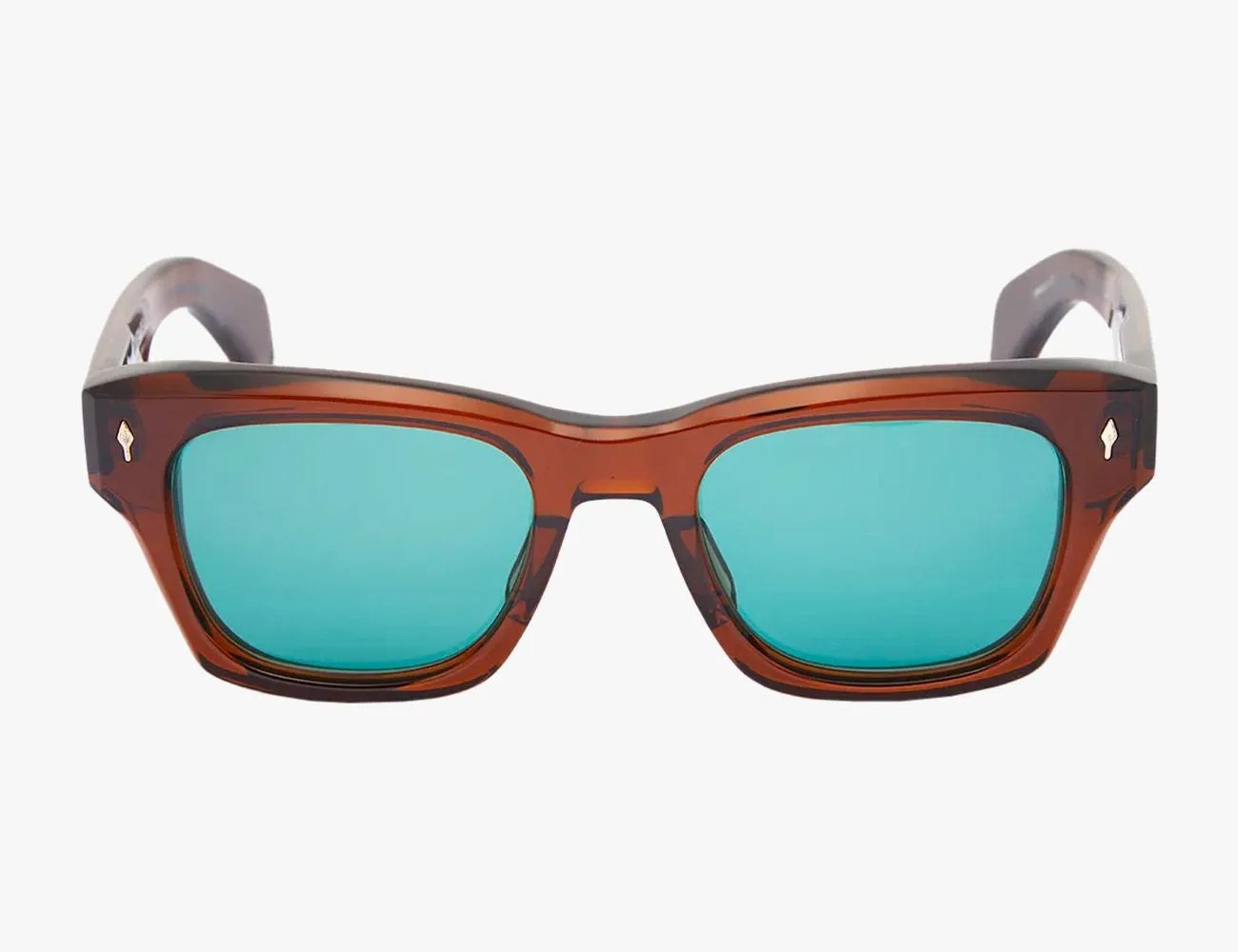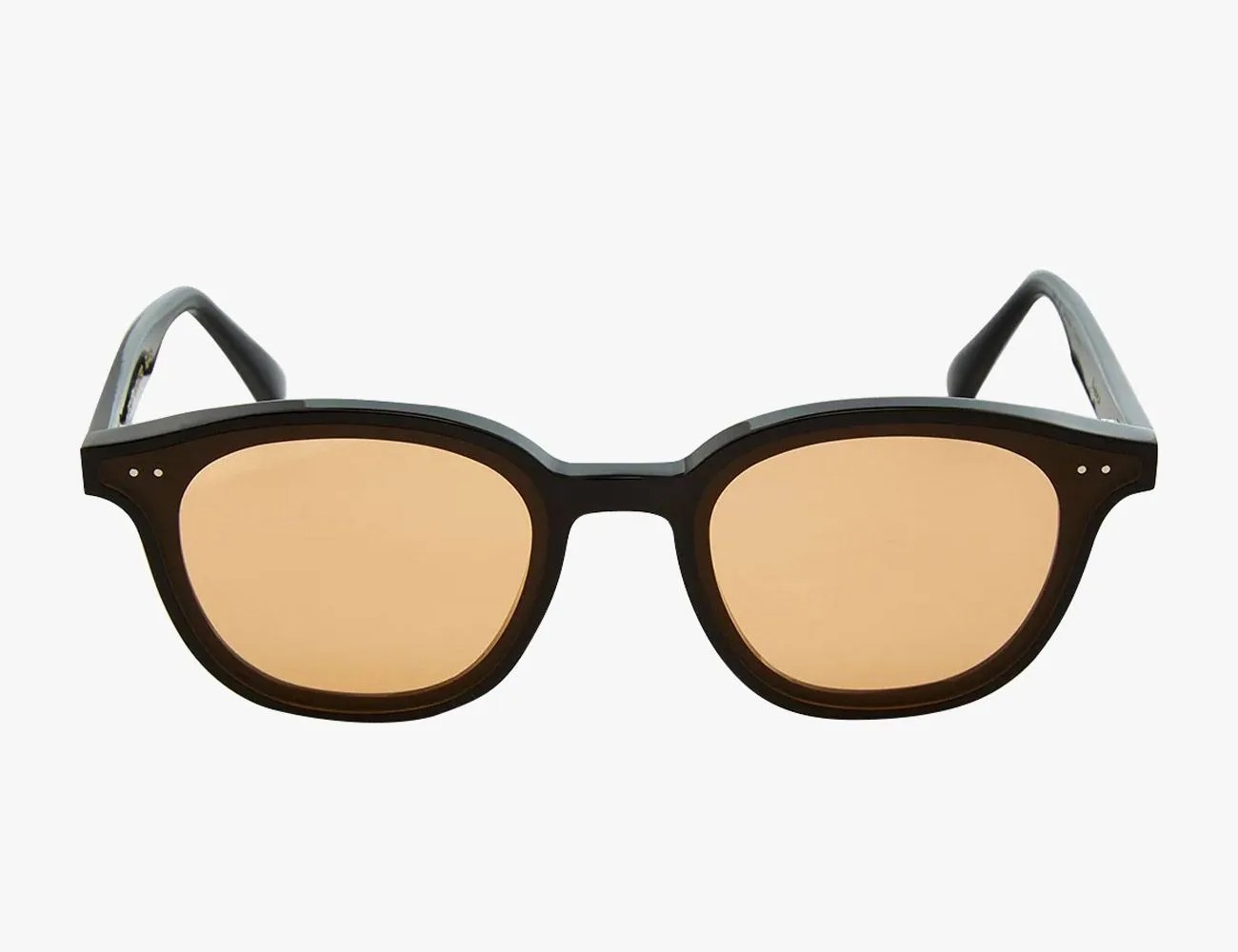Most people think the best shades come polarized. They are, in fact, more expensive than normal sunglasses. But are they inherently better? Not at all.
“Polarized lenses are great for intense sunny days, the same way it’s great to wear a Gore-Tex coat on a wet winter day,” says Julia Gogosha, founder of independent Los Angeles boutique Gogosha Optique. The technology, a thin film sandwiched between two lens wafers, was developed in the 1930s and channels light in a way that reduces the eye fatigue that triggers headaches.
But just as you’re not always doing battle with cold and rain, you’re not always under a glaring sun, floating down a river or carving up a mountain. For daily wear, turn to something more versatile and, in many cases, more affordable: tinted shades.
“Certain colors will evoke emotion or they’ll evoke mood or they’ll help calm or they can excite.”
Like their polarized counterparts, tinted lenses are treated to block UV rays from the sun. They just omit an extra step in the manufacturing process, meaning companies don’t have to sacrifice frame and lens quality to hit a more comfortable price point. But there’s another, arguably bigger advantage beyond value: Rather than limiting options to the polarized standard gray, brown and green, good old-fashioned tinted shades give you the option of virtually “every chromatic possibility you can see,” says Gogosha.
How you use the shades, of course, should dictate the color and saturation. “Think of it like how you would choose a band for a watch or how you use laces for a shoe,” Gogogsha says. “Are you trying to use it instead of a sunglass or do you want it more as a layering accessory?”
Early adopters of lighter shades — actors, directors, athletes and musicians among them — lean on them to reduce saturation and quickly turn the world down; or, as Gogosha puts it, to act as “hangover helpers.” Light lenses serve a function for the rest of us, too. “[People who] travel a lot, they’re going in and out of places all the time. They have very late nights,” Gogosha says. “There’s a lifestyle around just wanting to have something that you don’t have to take on and off all the time and keep track of.”
